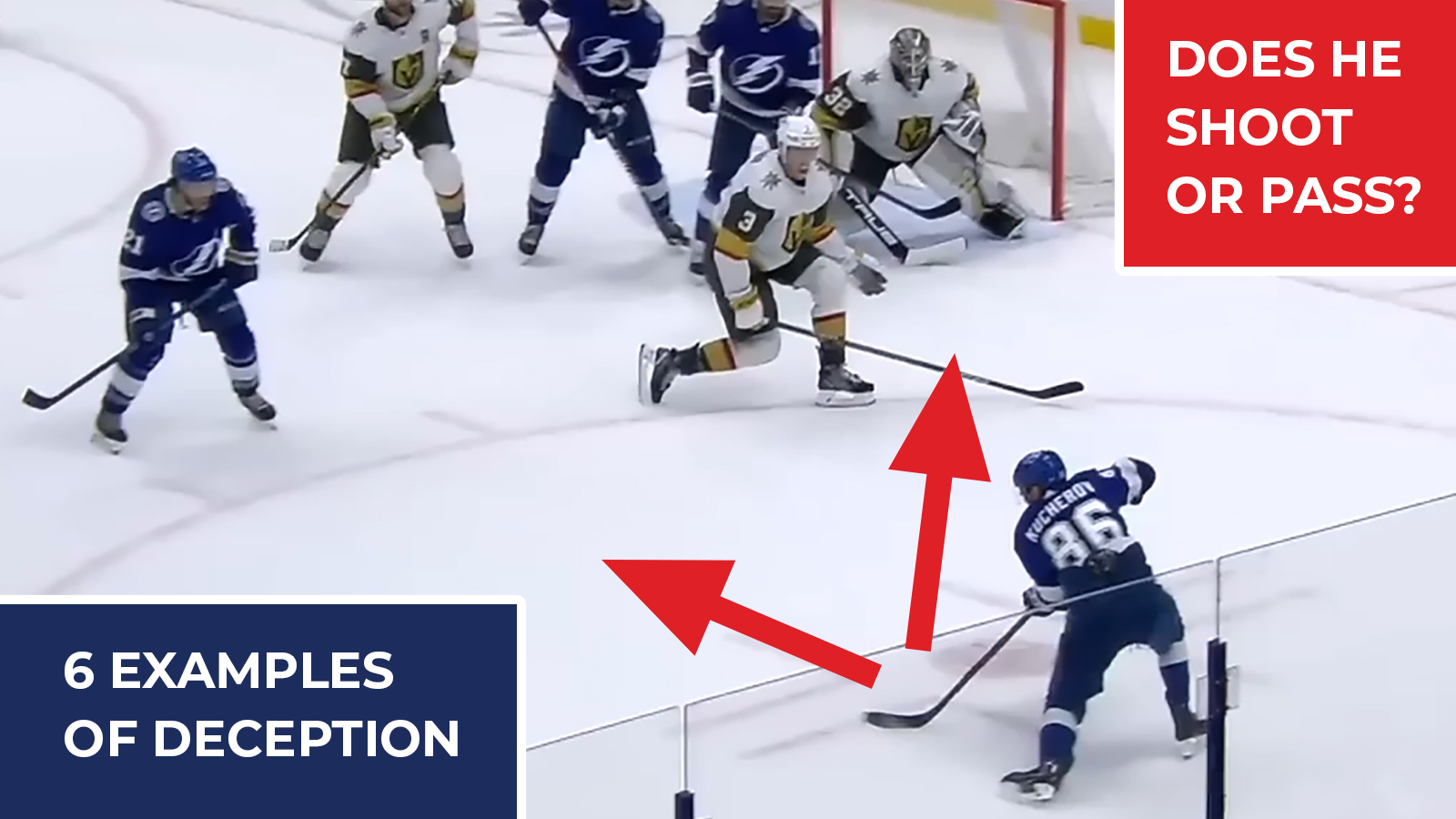
Use deception! Give them false information! Hockey players hear these terms all of the time, but what do they actually mean?
In the world of hockey, deception is a mix of fakes that are designed to misdirect the opposition. It's the art of making your rivals believe you're about to do one thing, only to surprise them by doing something entirely different. Deception is the key to unlocking opportunities and gaining time & space on the ice.
Below are 6 videos that give examples world class players being deceptive with their eyes, head, body, and feet.
Just like any skill, deception takes lots of practice to learn and to be able to perform in a game situation. The video examples below are from some of the best players in the world. Watch any high level hockey game and you will see players using the art of deception to gain time & space.
At the bottom of this article we give coaches an outline with specific drills that can help teach deception in practice.
1: Deception Overview & 2 Passing Examples
In the video above, USA Hockey gives a great overview of what deception is, along with 2 examples of players using deception to make the opposition think they were going pass one way, which creates space to pass to an open player.
2: Deceptive Skating - Inside To Outside With Change of Pace
In the 2 clips above, we show Connor McDavid and David Pastrnak using their eyes to make the defenders think they are going inside, then they explode to the outside. This maneuver surprises both of the defenders and unlocks space for McDavid and Pastrnak to score. View the full inside to outside skating breakdown here.
3: Deceptive Skating - The Stutter Stop Step
The stutter stop step uses deception by creating the illusion a player is going to cutback one way, but they do not. This deceptive skating technique creates time and space from a defender. The video shows a variety of examples from Sidney Crosby, Brad Marchand, and more. View the full stutter stop step breakdown here.
Video # 4: Deceptive Bump Pass
Here is an example of Nikita Kucherov performing a deceptive bump pass to the slot on the power play. One reason this pass was so successful is that he took multiple one time shots on net earlier in the shift, so the defenders, and goalie were preparing for another shot before he surprised them all with this deceptive pass.
One way deception works REALLY well is if you do not use deception in all of your playing actions. Mix in deception here and there to get the other team really guessing at what you are going to do.
Video # 5: Deceptive Shooting - No Look
Above is a example of Connor McDavid using his eyes to make the goalie, and defender think he is going to pass. The defenders are both cheating to block the pass, when McDavid surprises both of them by quickly firing the puck on net.
Video # 6: Deceptive Shooting - Changing Shot Angle
Auston Matthews is one of the best players in the NHL at deceptive shooting. He does this so well by changing the angle of his shot. In the video examples you can see him set up to shoot, which makes the defenders think he is going to shoot in one lane, and then he pulls the puck in to change the shot angle by 2-3 feet. This technique helps Matthews get the puck around defenders sticks and shin pads while completely surprising the goaltender. View 4 drills to practice changing your shot angle.
Ideas on how to teach a deceptive skill
- Show the video clips above and ask players what they see
- Explain and ask why deception is helpful - deception can create extra time and space by faking out your opponents
- Practice deception on the ice
- Start slow. One example could be to start players off by teaching them how to do a no look passing fake. To do this you could:
- Have players practice stationary deceptive passes by looking one way and using their peripheral vision to pass to their target. You practice this with each player pairing up, or you can do this with rondos.
- Progress to having them do the Evasive Passing drill by Dwayne Blais slowly
- Progress to having them do the Evasive Passing drill faster
- Progress to having them do a similar drill faster, and with more pressure
- Progress to a cross ice 3 v 3 small area game where players are awarded 1 point for making a deceptive pass, and 1 point for a goal. A deceptive pass that results in a goal could be a 2 point play! Watch Ben Eaves talk about 5 steps on how to learn a new skill, and apply this framework to learning deception or any skill.
- Don't stop there. You can show players additional deceptive video clips, and also encourage players to show you clips of deception if they see them in game highlights.
- Start slow. One example could be to start players off by teaching them how to do a no look passing fake. To do this you could:
Deception Conclusion
There is no exact way to use deception on the ice, and that is why many coaches call it "The Art of Deception." Just like any skill, deception takes lots of practice to be able to perform in a game situation. Coaches can show players these video examples and encourage players to start to perform these deceptive fakes in our 800+ hockey drills, and 100+ small area games.
We put together a list of 10 Keep Away Games that can allow players to practice deception.
Encourage the kids to be creative with deception and celebrate players trying new skills. Have fun with it!

